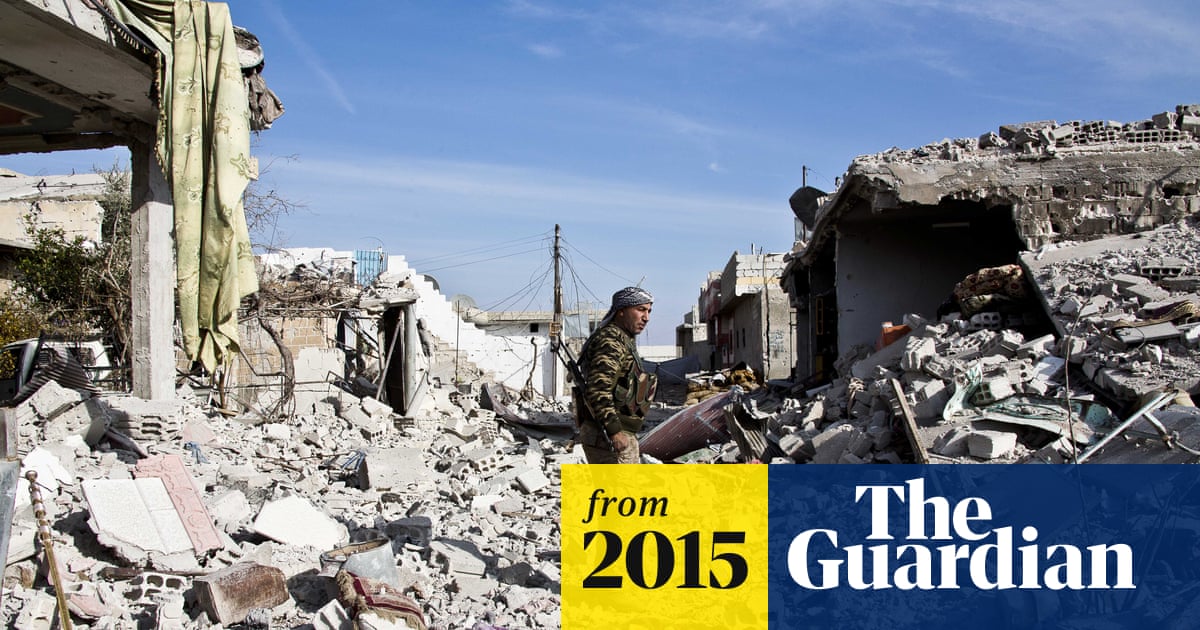Re: Regional geopolitics
Տարածաշրջանային բարդ խաղի հակառակ կողմը
2015-08-02
Հեղինակ՝ Մուսա Միքայելյան
Առանցքային հարցերից մեկը, որ այսօր առկա է տարածաշրջանում թե՛ Հայաստանի ու Լեռնային Ղարաբաղի առաջ, թե՛ նաև միջազգային հանրության, ղարաբաղյան հակամարտության ռազմական էսկալացիայի հարցն է՝ կլինի՞ լայնածավալ էսկալացիա, թե՞ չի լինի: Այս հարցին պատասխանելն իսկապես շատ դժվար է, որովհետև պարզապես ակնհայտ է, որ արդեն իսկ մի անսպասելի ուղղությամբ էսկալացիան ակնառու է:
Ըստ էության բռնկվել է թուրք-քրդական պատերազմ, որի զարգացման սցենարները կարող են լինել միանգամայն անկանխատեսելի: Եվ այս պատերազմն, ըստ էության, սահմանակից է Հայաստանին: Եվ եթե մեր աչքի առաջ, պարզապես մեր կողքին բռնկվում է նման ռազմական կոնֆլիկտ, ապա հարց է առաջանում, թե ինչո՞ւ չի կարող նույնը տեղի ունենալ մեր մյուս կողքին, այսինքն՝ արդեն Ադրբեջանի ուղղությամբ, որտեղ արդեն կոնֆլիկտի մի կողմում կլինենք մենք՝ հայերս: Առավել ևս, որ այս ուղղությամբ ռազմական ծավալուն բախման հիմքերը, մեղմ ասած, ավելի քիչ չեն, եթե չասենք, որ ավելի տաք են, քան թուրք-քրդական կոնֆլիկտի հիմքերն էին:
Մյուս կողմից՝ թուրք-քրդական հակամարտությունը, պարզապես ռազմական կոնֆլիկտը մեզ, ըստ էության, կարող է հիմք տալ իրերին նայել մեկ այլ տեսանկյունից: Ակնհայտ է, որ այս կոնֆլիկտին Թուրքիան որոշակիորեն մղվել է: Մինչ դրա հասունանալը տեղի ունեցան մի շարք իրադարձություններ, որոնց արդյունքում պաշտոնական Անկարան ձեռնամուխ եղավ ռազմական գործողությունների, իբրև թե ԻՊ ահաբեկչական խմբավորման, իրականում քրդերի դեմ:
Ակնհայտ է, որ Անկարայի այս գործողությունները հավանության է արժանացրել Միացյալ Նահանգները: Չի դժգոհել նաև Ռուսաստանը: Էրդողանը հեռախոսազրույց է ունեցել և՛ Օբամայի, և՛ Պուտինի հետ: Մոսկվան էլ որևէ կերպ չի փորձել հրապարակավ հետ պահել Անկարային գործողություններից: Սրան զուգահեռ՝ մենք ականատես ենք եղել ղարաբաղյան ուղղությամբ ԱՄՆ բանակցային ակտիվացման ջանքերին՝ միաժամանակ տեսնելով, որ Ռուսաստանը կարծեք թե առանձնապես չի խոչընդոտում այդ ջանքերին:
Եվ այս առումով շատ հավանական է դառնում, որ մենք ականատես ենք լինում ԱՄՆ դիրիժորությամբ մի տարածաշրջանային խաղի, որին Մոսկվան պարտավորվել է առնվազն չխանգարել, և որում բռնկվել է թուրք-քրդական մի մեծ կոնֆլիկտ, որին «չխանգարելուե համար ԱՄՆ-ը ջանքեր է գործադրում ղարաբաղյան հակամարտության թեժացում, ռազմական բռնկում թույլ չտալու համար:
Այսինքն՝ իրականում ղարաբաղյան ներկայիս ակտիվությունը միանգամայն հնարավոր է, որ պայմանավորված էր թուրք-քրդական կոնֆլիկտ թեժացնելու ծրագրով, որն անկասկած շատ ավելի լայն ընդգրկում ունեցող խնդիր է, քան ղարաբաղյան հակամարտությունը:
Տարածաշրջանային բարդ խաղի հակառակ կողմը
2015-08-02
Հեղինակ՝ Մուսա Միքայելյան
Առանցքային հարցերից մեկը, որ այսօր առկա է տարածաշրջանում թե՛ Հայաստանի ու Լեռնային Ղարաբաղի առաջ, թե՛ նաև միջազգային հանրության, ղարաբաղյան հակամարտության ռազմական էսկալացիայի հարցն է՝ կլինի՞ լայնածավալ էսկալացիա, թե՞ չի լինի: Այս հարցին պատասխանելն իսկապես շատ դժվար է, որովհետև պարզապես ակնհայտ է, որ արդեն իսկ մի անսպասելի ուղղությամբ էսկալացիան ակնառու է:
Ըստ էության բռնկվել է թուրք-քրդական պատերազմ, որի զարգացման սցենարները կարող են լինել միանգամայն անկանխատեսելի: Եվ այս պատերազմն, ըստ էության, սահմանակից է Հայաստանին: Եվ եթե մեր աչքի առաջ, պարզապես մեր կողքին բռնկվում է նման ռազմական կոնֆլիկտ, ապա հարց է առաջանում, թե ինչո՞ւ չի կարող նույնը տեղի ունենալ մեր մյուս կողքին, այսինքն՝ արդեն Ադրբեջանի ուղղությամբ, որտեղ արդեն կոնֆլիկտի մի կողմում կլինենք մենք՝ հայերս: Առավել ևս, որ այս ուղղությամբ ռազմական ծավալուն բախման հիմքերը, մեղմ ասած, ավելի քիչ չեն, եթե չասենք, որ ավելի տաք են, քան թուրք-քրդական կոնֆլիկտի հիմքերն էին:
Մյուս կողմից՝ թուրք-քրդական հակամարտությունը, պարզապես ռազմական կոնֆլիկտը մեզ, ըստ էության, կարող է հիմք տալ իրերին նայել մեկ այլ տեսանկյունից: Ակնհայտ է, որ այս կոնֆլիկտին Թուրքիան որոշակիորեն մղվել է: Մինչ դրա հասունանալը տեղի ունեցան մի շարք իրադարձություններ, որոնց արդյունքում պաշտոնական Անկարան ձեռնամուխ եղավ ռազմական գործողությունների, իբրև թե ԻՊ ահաբեկչական խմբավորման, իրականում քրդերի դեմ:
Ակնհայտ է, որ Անկարայի այս գործողությունները հավանության է արժանացրել Միացյալ Նահանգները: Չի դժգոհել նաև Ռուսաստանը: Էրդողանը հեռախոսազրույց է ունեցել և՛ Օբամայի, և՛ Պուտինի հետ: Մոսկվան էլ որևէ կերպ չի փորձել հրապարակավ հետ պահել Անկարային գործողություններից: Սրան զուգահեռ՝ մենք ականատես ենք եղել ղարաբաղյան ուղղությամբ ԱՄՆ բանակցային ակտիվացման ջանքերին՝ միաժամանակ տեսնելով, որ Ռուսաստանը կարծեք թե առանձնապես չի խոչընդոտում այդ ջանքերին:
Եվ այս առումով շատ հավանական է դառնում, որ մենք ականատես ենք լինում ԱՄՆ դիրիժորությամբ մի տարածաշրջանային խաղի, որին Մոսկվան պարտավորվել է առնվազն չխանգարել, և որում բռնկվել է թուրք-քրդական մի մեծ կոնֆլիկտ, որին «չխանգարելուե համար ԱՄՆ-ը ջանքեր է գործադրում ղարաբաղյան հակամարտության թեժացում, ռազմական բռնկում թույլ չտալու համար:
Այսինքն՝ իրականում ղարաբաղյան ներկայիս ակտիվությունը միանգամայն հնարավոր է, որ պայմանավորված էր թուրք-քրդական կոնֆլիկտ թեժացնելու ծրագրով, որն անկասկած շատ ավելի լայն ընդգրկում ունեցող խնդիր է, քան ղարաբաղյան հակամարտությունը:






Comment